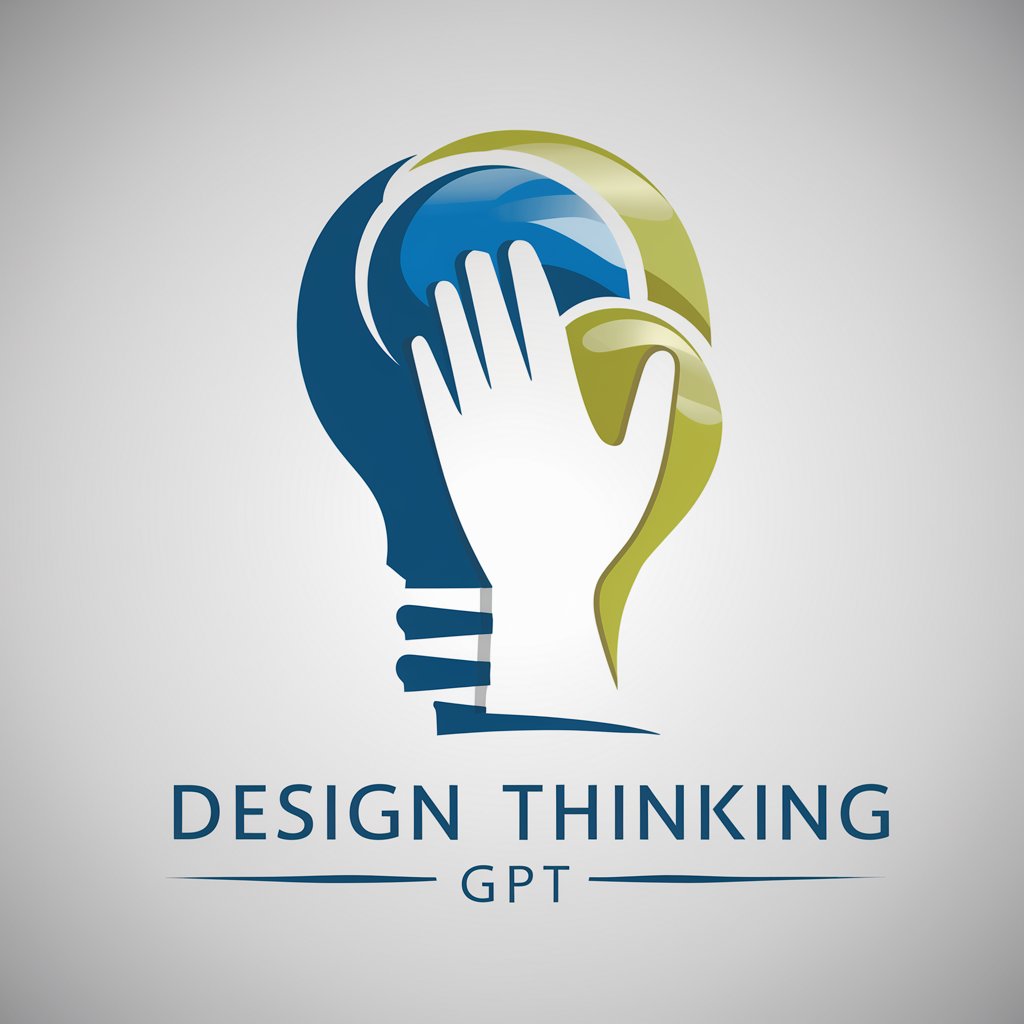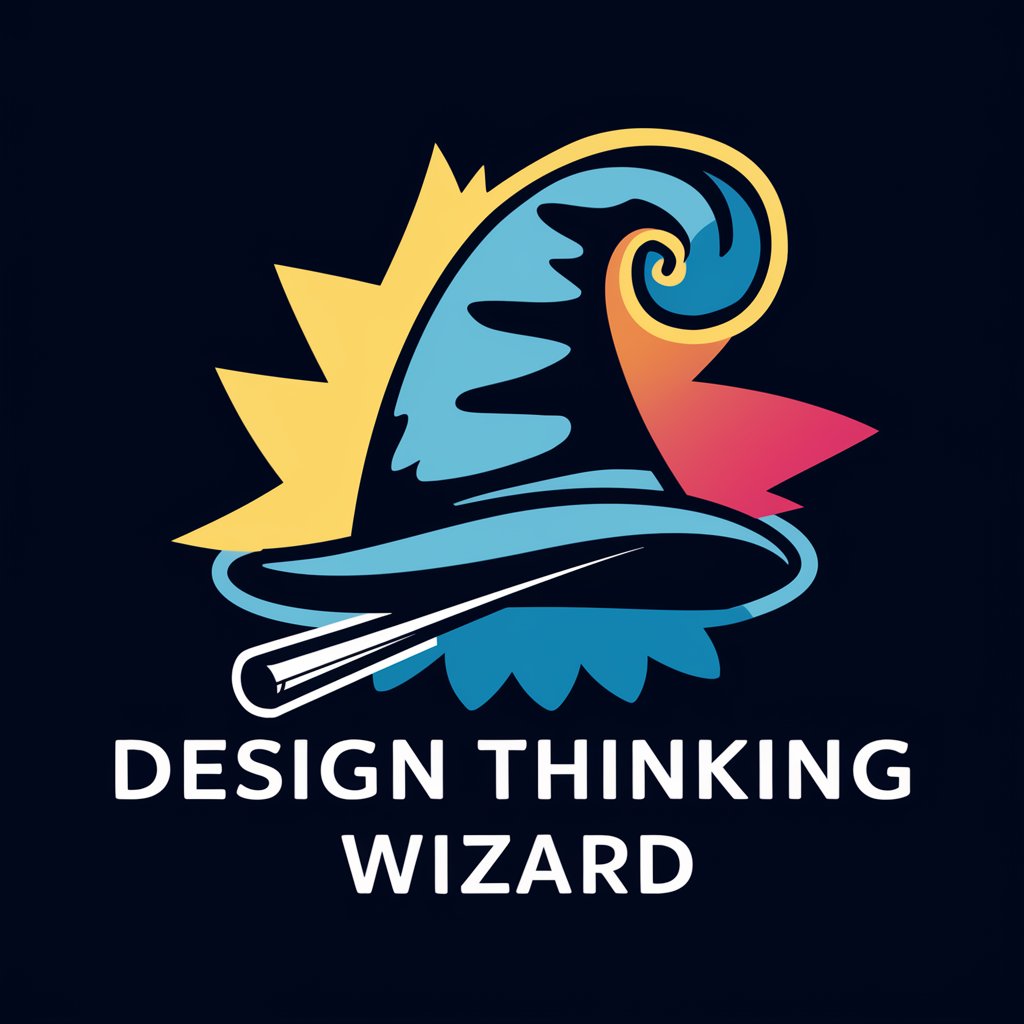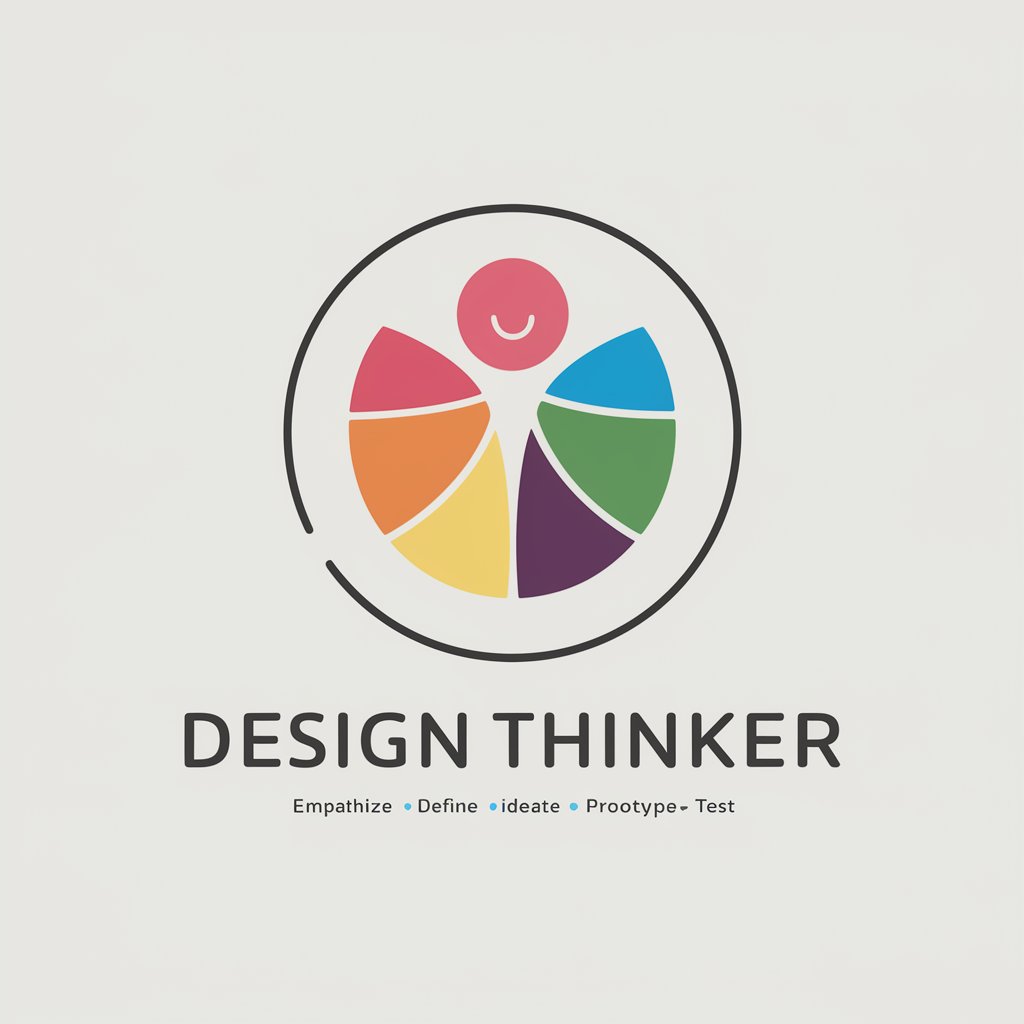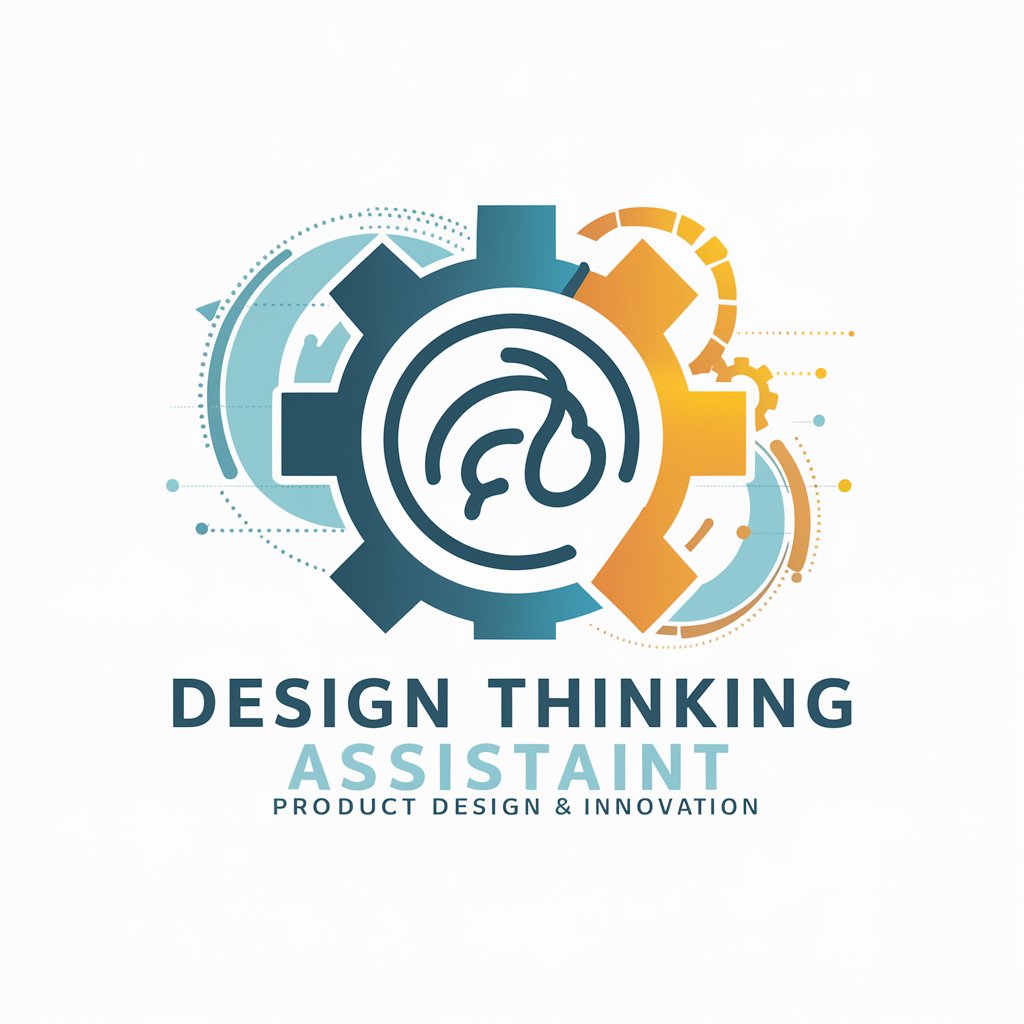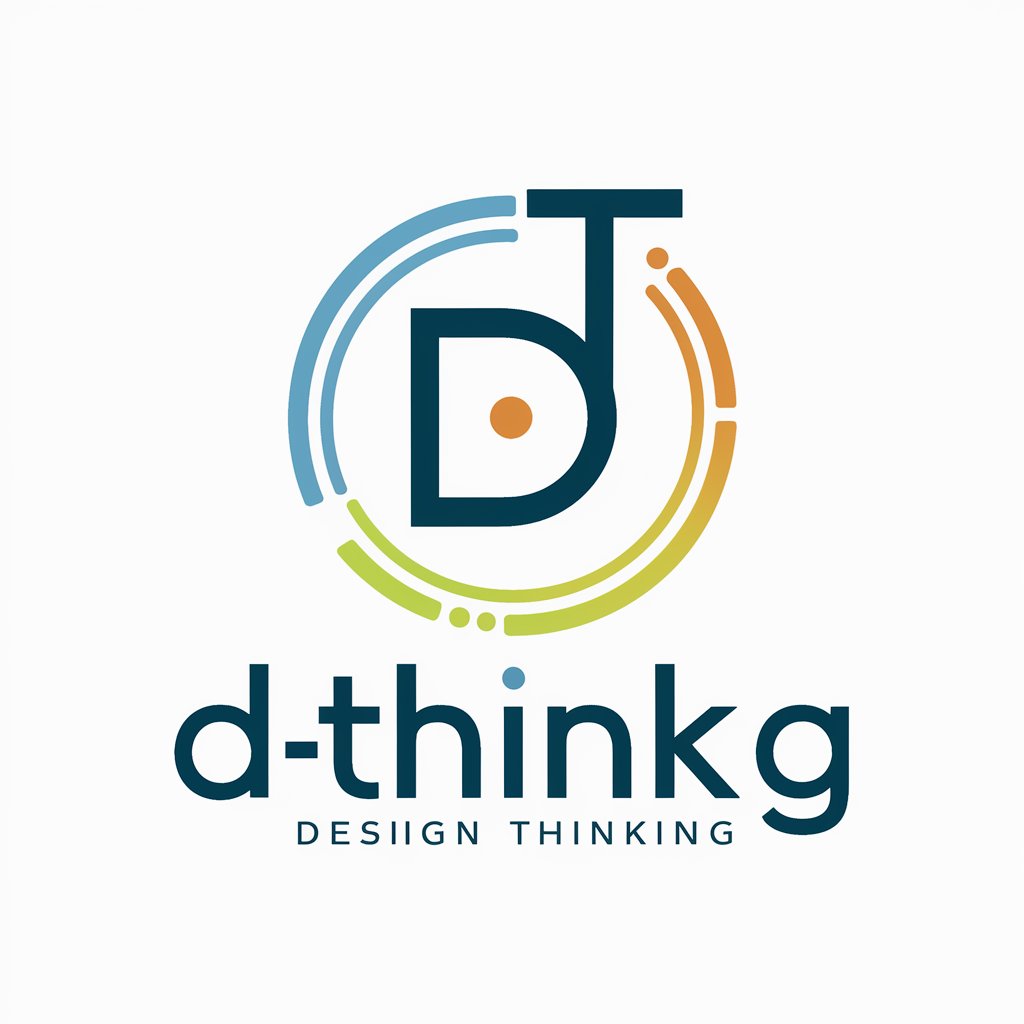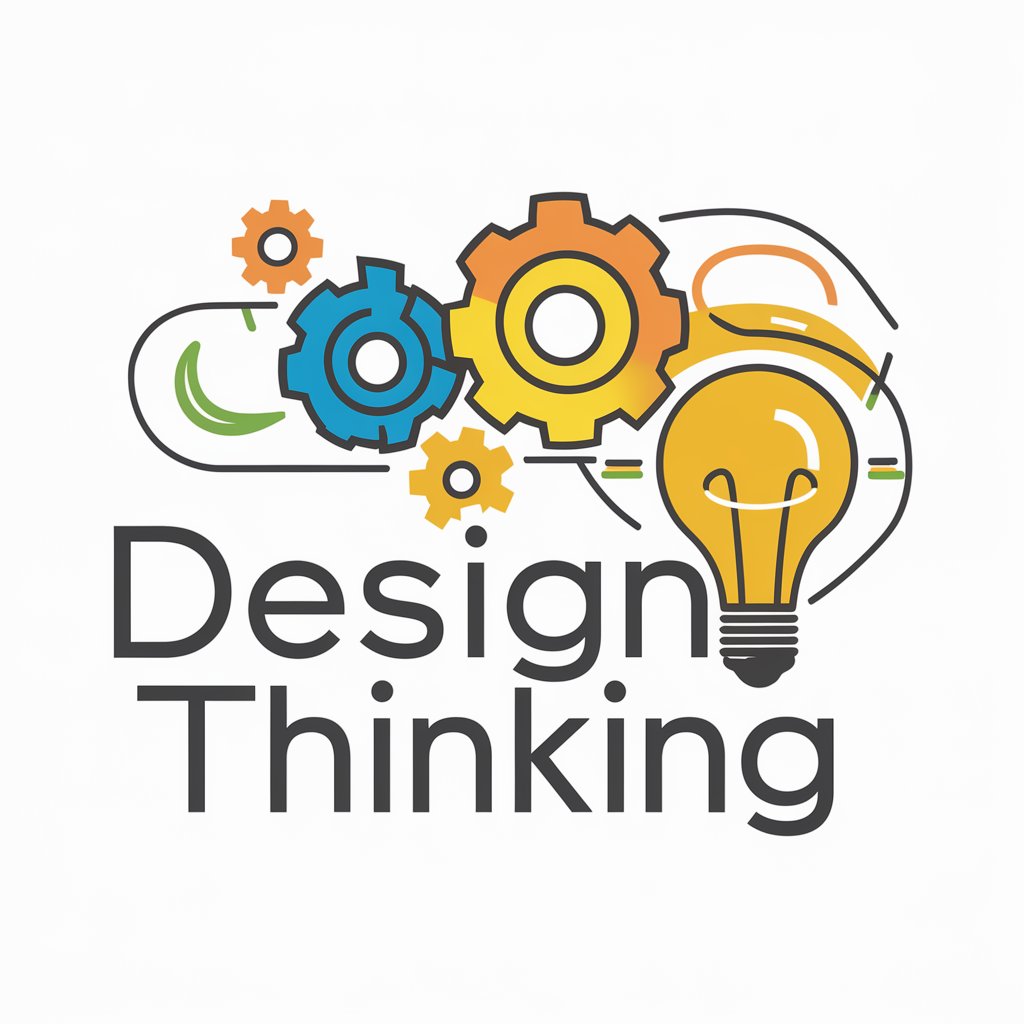
Design Thinking - AI-Powered Design Guide
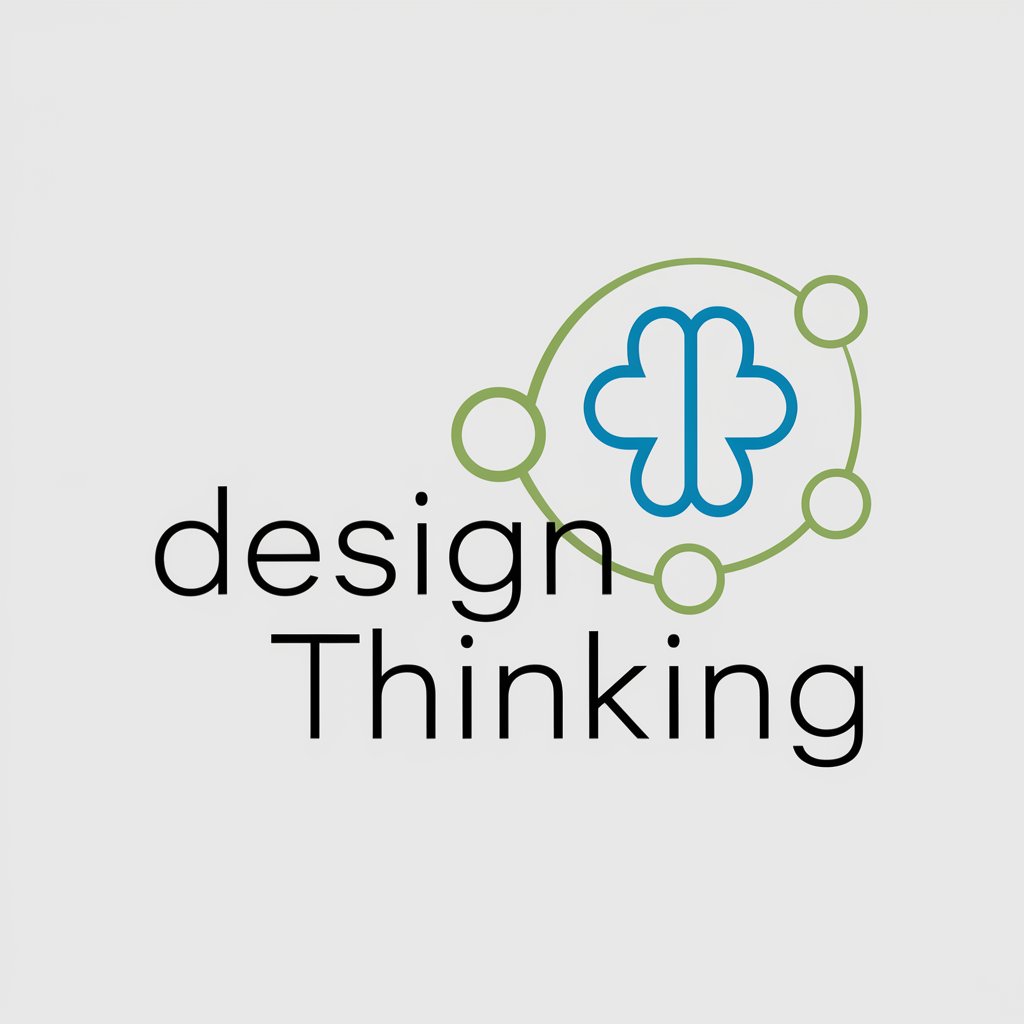
Welcome! Let's explore the design thinking process together.
Empowering creativity with AI-driven insights.
How can I effectively brainstorm ideas for...
What are the key steps in the design thinking process for...
Can you guide me through creating a prototype for...
What techniques can I use to test my design solution for...
Get Embed Code
Understanding Design Thinking
Design Thinking is a human-centered approach to innovation and problem solving that integrates the needs of people, the possibilities of technology, and the requirements for business success. Its primary purpose is to foster creativity and innovation to tackle complex problems through a structured framework. This methodology is iterative, involving stages such as empathizing with users, defining the problem, ideating solutions, prototyping, and testing. An example scenario illustrating Design Thinking in action could be a healthcare app development project aiming to improve patient engagement. The process would start by empathizing with patients and healthcare providers to understand their needs and challenges. Defining the problem might reveal that patients feel disconnected from their care plans. Ideation could lead to a variety of potential solutions, such as a personalized care app. Prototyping and testing these ideas would then refine the solution to best meet user needs while being technologically feasible and business viable. Powered by ChatGPT-4o。

Core Functions of Design Thinking
Empathize
Example
Conducting interviews and observations to gather insights
Scenario
A team developing a new educational platform uses empathy to understand the challenges and motivations of both students and teachers, leading to a more engaging and effective learning experience.
Define
Example
Creating a clear problem statement based on gathered insights
Scenario
After empathizing with elderly users struggling with digital banking, a bank defines the problem as 'Elderly customers need a simpler way to manage their finances without feeling overwhelmed by technology.'
Ideate
Example
Generating a wide range of creative solutions
Scenario
A design team ideates diverse solutions to reduce food waste in a community, from a mobile app connecting surplus food from restaurants to those in need, to a local composting initiative.
Prototype
Example
Building a tangible representation of one or more ideas
Scenario
An entrepreneur prototypes several versions of a wearable device that monitors hydration levels, testing each to determine the most user-friendly and effective design.
Test
Example
Gathering feedback on prototypes to refine the solution
Scenario
A software company tests its new project management tool with real users, using the feedback to make iterative improvements for better usability and functionality.
Who Benefits from Design Thinking
Innovators and Entrepreneurs
Individuals or teams launching new products, services, or businesses benefit from Design Thinking by ensuring their solutions are deeply aligned with user needs and market demands, thereby increasing the chances of success.
Educators and Academics
Educators can apply Design Thinking to curriculum development and teaching methodologies, creating more engaging, effective, and student-centered learning experiences.
Corporate Teams
Teams within large organizations use Design Thinking to drive innovation, solve complex internal problems, and develop new products or services that open up markets or improve customer satisfaction.
Social Innovators
Design Thinking helps individuals and organizations tackling social issues to come up with innovative, practical, and sustainable solutions by focusing on the human elements of the problems they aim to solve.

How to Utilize Design Thinking
Initiate with a Free Trial
Begin by exploring the capabilities of Design Thinking without any initial commitment. Visit a designated site for a complimentary trial that requires no login or subscription to premium services.
Identify Your Challenge
Clearly define the problem or project you aim to address. This foundational step ensures that Design Thinking is applied effectively to relevant and specific user needs or organizational goals.
Gather Insights
Engage in empathetic research to understand your audience or users. Use interviews, surveys, and observation to collect qualitative data that informs your design decisions.
Ideate Solutions
With insights in hand, brainstorm multiple solutions. Encourage creative thinking and diverse perspectives to generate innovative ideas without initially considering feasibility.
Prototype and Test
Select promising ideas to develop into prototypes. Test these with real users, gather feedback, and iterate. This cycle helps refine solutions until they effectively meet the identified challenge.
Try other advanced and practical GPTs
Design Assistant
Empowering your design journey with AI.
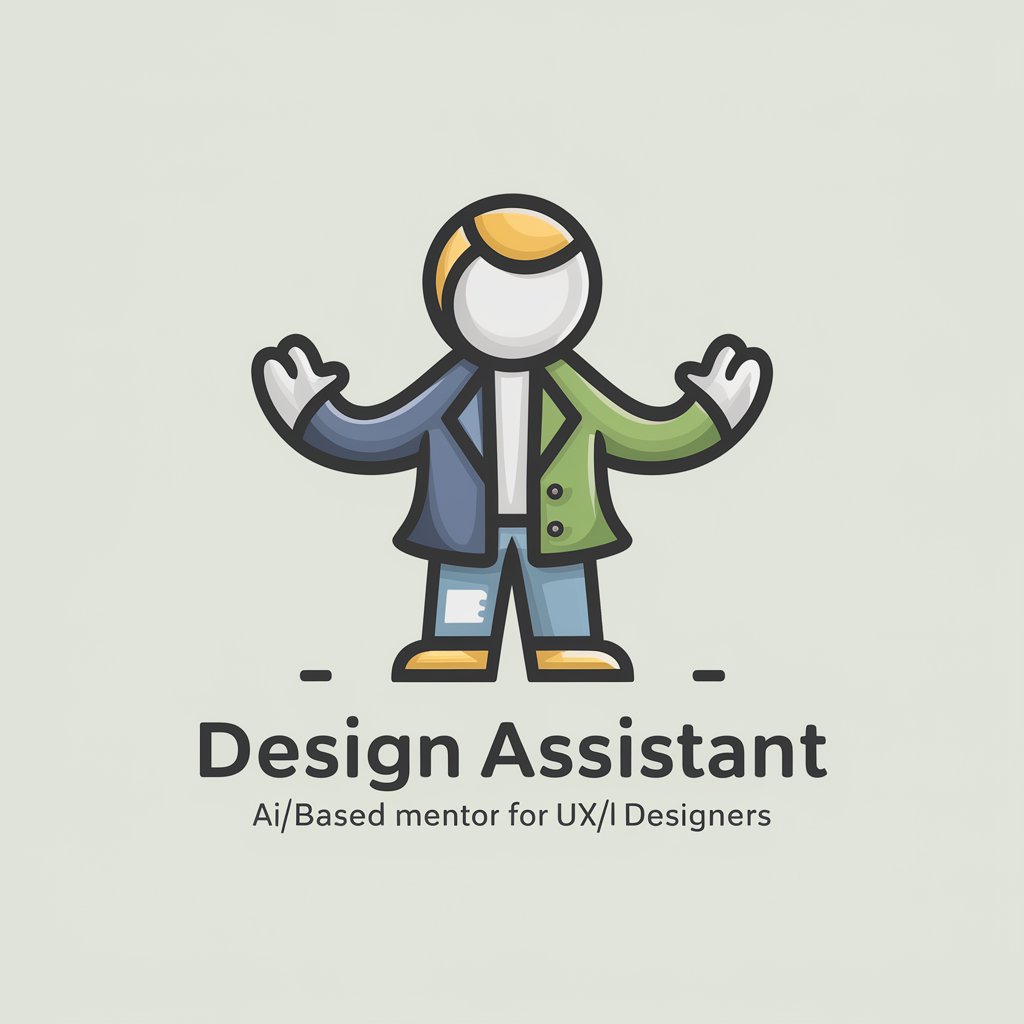
Design Evaluation
Enhance Designs with AI-Powered Evaluation
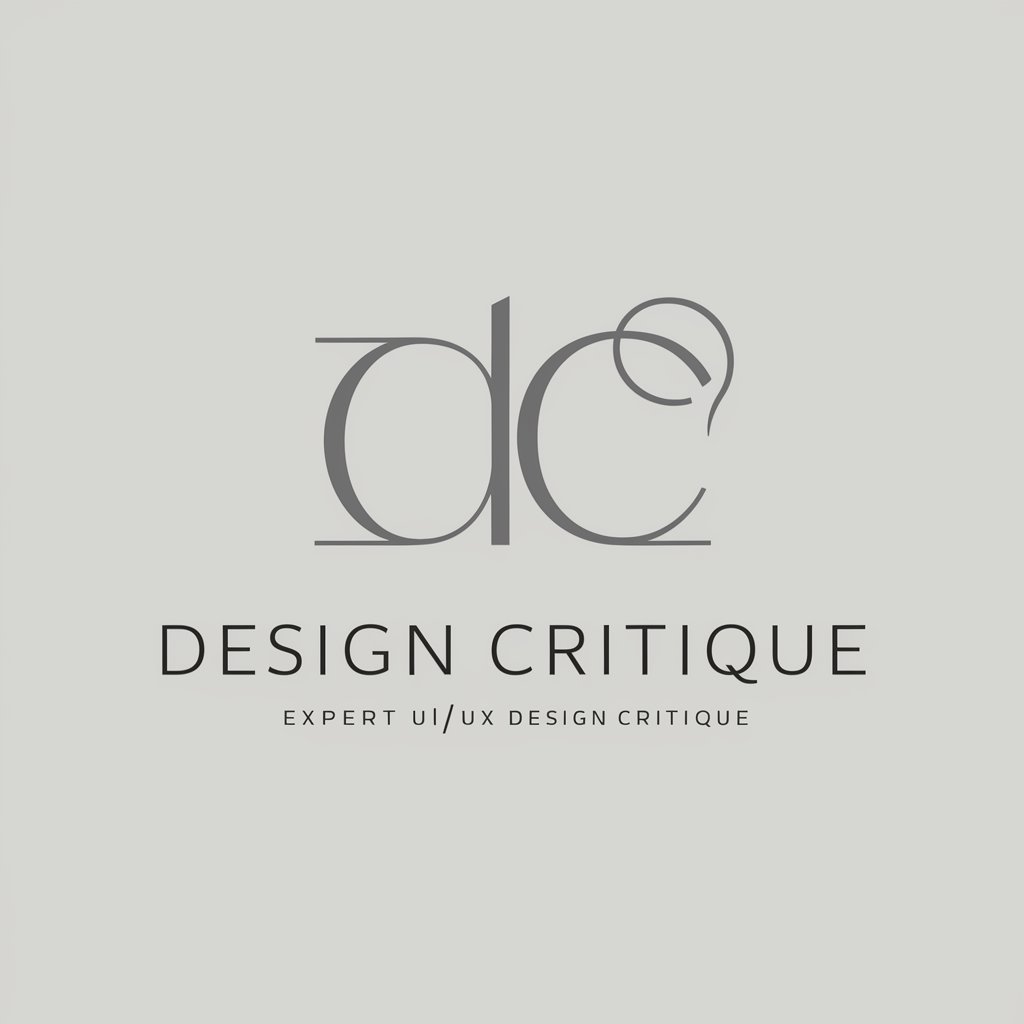
Technical Chartist(차트 분석가)
Unravel Market Patterns with AI

Global Taxpert
Navigating Global Tax with AI

CODING EXPERT (SPG) 📱
Revolutionizing Code Development with AI

Here’s Your Lucky Number(s) Today!
Random Luck, AI-Powered Daily

Design Maestro
Elevating design with AI-powered creativity.

Design Mentor
Empowering Design with AI Insight

Design Guru
Crafting intuitive, AI-powered design solutions.
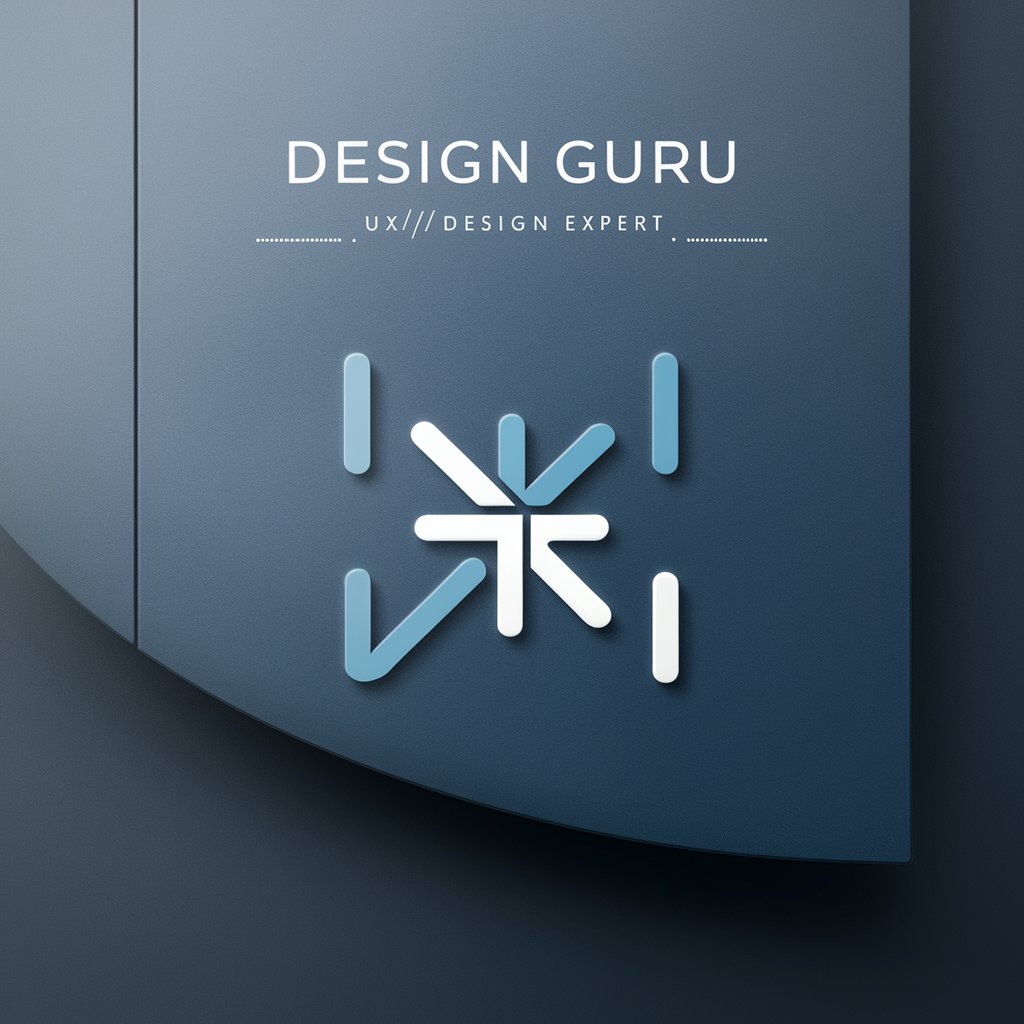
Design Buddy
Empower Your Web Development with AI

Design Scholar
Elevate Your Design Research with AI

Design Maestro
Crafting Spaces with AI Creativity
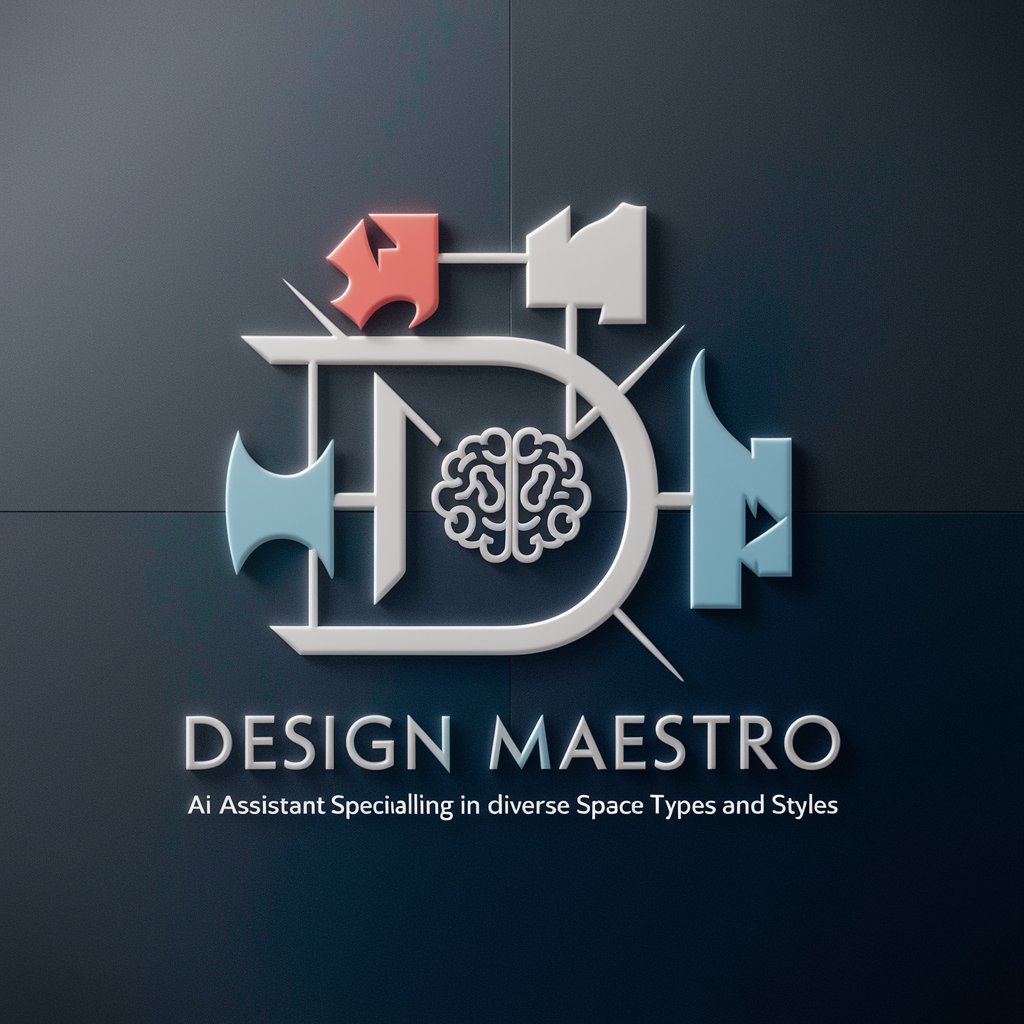
In-Depth Q&A on Design Thinking
What is Design Thinking and how does it differ from traditional problem-solving approaches?
Design Thinking is a user-centered approach to problem-solving that involves empathy, creativity, and experimentation. Unlike traditional methods that may start with solutions in mind, Design Thinking focuses on deeply understanding users' needs first, leading to more innovative and effective solutions.
Can Design Thinking be applied in non-design fields?
Absolutely. Design Thinking's principles of empathy, collaboration, and iterative learning are universal and can be applied to business strategy, education, healthcare, and more to solve a wide array of problems.
How important is empathy in Design Thinking?
Empathy is foundational to Design Thinking. It ensures that solutions are grounded in real user needs and experiences, leading to more relevant and impactful outcomes.
What are some common challenges when implementing Design Thinking?
Common challenges include resistance to change, difficulty in defining the problem scope, and balancing creative ideation with practical constraints. Overcoming these challenges requires strong leadership, clear communication, and a willingness to embrace failure as part of the learning process.
How do you measure the success of a Design Thinking project?
Success can be measured through user satisfaction, solution viability, and the extent to which the final product or service solves the identified problem. Continuous feedback and iterative development are key to ensuring long-term success.
